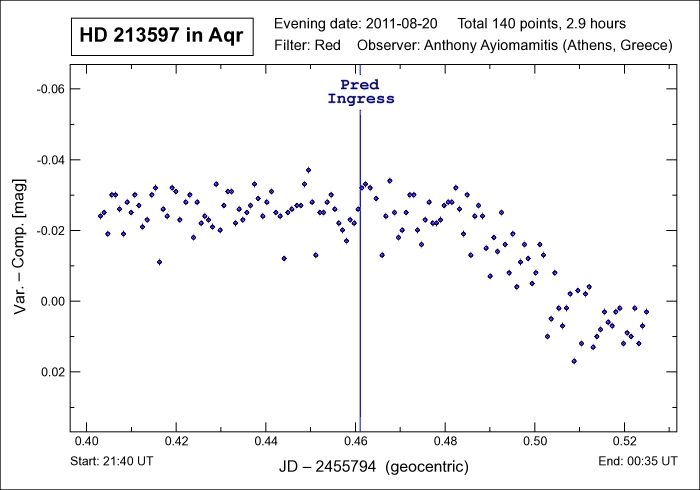
A variable star, as its name suggests, is a star whose magnitude varies intrinsically, in contrast to eclipsing binaries whose magnitude
varies as a result of one star in the binary system eclipsing the other. True variables are one of five types, namely Mira stars, semiregular
stars, cepheids, eruptive variables and, finally, cataclysmic variables. Minimum to maximum magnitude can range from days to many months with
some variables displaying irregular periods.
A popular method for the study of variable stars, particularly short-term variables, is by the use of the technique known as "differential
photometry". Rather than measure the (variable) magnitude of a variable star on an absolute scale, measurements are made over time relative
to one or more non-variable star(s) and these differences are then plotted so as to study and illustrate the relative or differential change
in magnitude. Due to the very large number of variables stars, the field of differential photometry represents one of the key fields in
astronomy whereby the amateur astronomer can make a meaningful and long-lasting contribution to both science and astronomy.
More recently, the search for extrasolar planets (over 510 discovered so far) has identified yet another interesting application for the
practice of differential photometry whereby the minute drops in magnitude of a star hosting an exoplanet are studied. Further details for the
interested party are available here.
Note: NASA's STEREO (Solar TErrestrial RElations
Observatory) involves the deployment of a pair of satellites - one ahead of Earth's orbit and another behind it - so as to allow for the
complete monitoring of the Sun's activity and its effects on Earth (vis a vis solar wind etc). A byproduct of this mission has been the study of
stars within the cameras' field of view and which has yielded many eclipsing binaries which represent new discoveries as well as the chance
discovery of a substellar orbiting companion around HD 213597.
For further details involving the data mining of the STEREO mission survey data and extraction of HD 213597 as an interesting and peculiar
exoplanet candidate, see the publication by Karl Wraight et al
here. The orbiting companion of HD 213597 is now the
focus of intense study.
Note: The C- and K-stars used for the purposes of the differential photometry measurements depicted below were SAO
127601 (mag 7.86) and SAO 127587 (mag 9.15), respectively.
|
Parent Star: HD 213597 GSC Catalog: GSC 0567:1913 Constellation: Aquarius RA / Dec: 22h 32m 33s / +01° 34' 57" Magnitude: 7.493 Distance: 000 light-years Exoplanet: HD 213597b Period: 2.4238 + 0.0000 d Transit Duration: 279 minutes Transit Depth: 25.0 mmag Minimum Mass: 0.000 MJup Radius: 0.00 RJup Pred Transit Details:
|
 |
Date: Aug 21, 2011 00:40:00 - 03:36:25 UT+3 Location: Athens, Greece Equipment: AP 305/f3.8 Riccardi-Honders AP 1200GTO GEM SBIG ST-10XME SBIG CFW10 SBIG LRGB filters Integrations:
Temperatures:
Software: CCDSoft V5.00.201 AIP4Win V2.2 Processing: Reduction Differential Photometry |